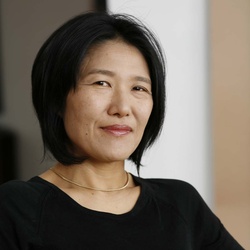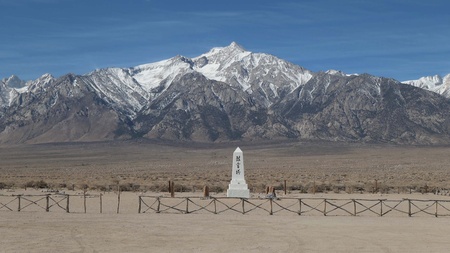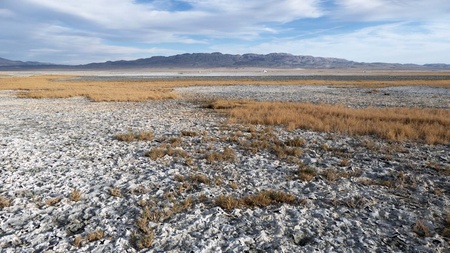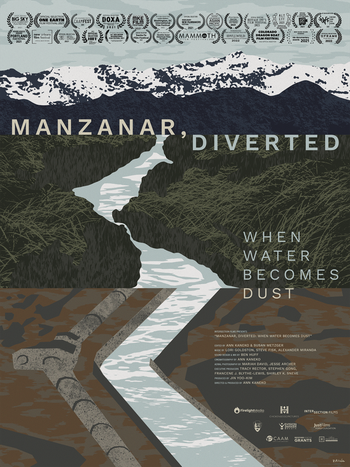Manzanar, Diverted trailer
Dear Ann,
What a road you’ve traveled since I saw an earlier version of Manzanar, Diverted in our Tacoma basement years ago, pre-pandemic! I’m so thrilled to see that the film is traveling widely at festivals, received a national PBS airing. And I’m inspired by the fact that your team is still working with communities around the country to raise awareness of this intersectional history of Indigenous peoples, Japanese Americans, rancher families, environmental justice activists, and water rights advocates in Southern California.
I wanted to take some time to express just how much I appreciate the film on so many levels—and hopefully encourage others to see it, if they haven’t yet.
In your thoughtful and detailed Press Notes—which should be required reading for anyone who wants to know more about the film—you say that you were wary of doing another film about Japanese American wartime incarceration. This was in part because there are so many excellent camp films already in existence, in part because you had worked on one film already (A Flicker in Eternity), and in part because you have worked on expanding your own sense of Japanese American identity in addition to camp history. “What could we unearth that was new?,” you wondered.
As a public historian and memoirist I also share those cautions. We stand on the shoulders of so much that’s been created in the wake of the incarceration—and yet I think there’s still more to uncover, almost as if counterbalancing the decades of national and community silence (with few exceptions) that seemed to largely follow the decades just after the war. Your film is proof that, indeed, there is so much more, based partly at the edges of what we don’t know.
Gaps in knowledge, and where they overlap, is a theme that I found especially moving in Manzanar, Diverted. We hear Indigenous folks like Kathy Jefferson Bancroft and Beverly Newell (Lone Pine Nation) talking about how they knew about or even remembered Japanese Americans coming to the valley, but knowing very little about why. We hear Rose Masters, a member of the National Parks Service staff, talking about how she didn’t learn about Manzanar in high school.
And in the Press Notes, you yourself talk about what you did not know about the Indigenous struggles for water rights in the valley. I love the idea that new stories and new knowledges can appear at the edges of what our communities only know tangentially, and this film really demonstrated that beautiful unfurling.
I also loved the way that the film charts a newer genealogy for Japanese American history, beginning not with Manzanar as camp or as Japanese American historical site, but beginning with beautiful reverence for the land and with the voice of Kathy Jefferson Bancroft. For me, some of the most exciting projects that are happening now focus on the intersections of Japanese American and Native American histories, including Professor Hana Maruyama’s work and the Snow Country Prison Memorial courtyard in development at the United Tribes Technical College in Bismarck, North Dakota.
I was moved to see rare archival footage of Warren Furutani and the first Manzanar Pilgrimage, in a sense giving us a sense of the origins of Japanese American community pilgrimages. “We found somewhere to march to,” Furutani says, and that helps to place us as descendants in the 1960s origins of these pilgrimages.
Your film helped me dive further into the origins of Japanese American pilgrimages, and even to find the person who’s credited with the term “pilgrimage” for these events, Victor Shibata. It’s history that I’m not sure many descendants know.
The women in this film, centered—so many women speaking, their voices opening and closing the film. I loved seeing footage of Monica Mariko Embrey and so much archival footage of her grandmother Sue Kunitomi Embrey, an intergenerational tapestry there. To first hear Sue Embrey’s voice as strong, defiant, resolute in her redress testimony was so inspiring—not the passive or tragic voice of a Nisei woman that seems to be more prevalent in representations of camp. I appreciated the range of actions that the film depicts as resistance, from speaking out at public hearings to creating gardens within concentration camps to the Indigenous folks doing a commemorative inside the valley, a joyful inhabiting and reclaiming of that space.
I loved the balance of adversity and strength and joy in the film, as well; it feels important to show both, again resisting a (solely) tragic narrative about the incarceration or the forced removal of Indigenous communities but also showing strong voices and victories during the redress and public hearings about water rights, respectively.
And your use of the archive! Family photos, for example, from Sue Kunitomi Embrey’s family, but also from the family of Madelon Arai Yamamoto, the daughter of the man who created a pond within Manzanar, and Henry Nishi, the son of the man who designed Merritt Park inside Manzanar. So many juxtapositions of past and present—for example, contemporary automobile traffic on the freeway with grainy black-and white footage of older railway and automobiles. The combination of intimate family archives with historical footage like from the ribbon cutting of a road opening during the early 20th century also feels like an expansion of the historical archive.
Though I remember you were a bit concerned about adding maps, thank you for adding them in a few strategic places. They really did help me get a sense of the geography, but your use of gorgeous panoramic shots, drone photography, and soundscapes convey a deep reverence for the landscape and their own outrage about the desolation caused by the draining of water from the valley. I was overwhelmed with the beauty of the valley and the mountains, so many shots of running flowing water and the creeks surrounded by trees, and the cracked and dusty ground in places that had been harmed by water pumping.
Overall, thank you for creating such an important, beautiful, and moving work. I’m inspired by the Day of Action that you created in tandem with organizations like Tsuru for Solidarity in November 2022 and the most recent event here in Seattle, hosted by the University of Washington. I hope that the film will continue to travel around the world and that more people will be able to see it.
Every image of the film feels deliberate, from the opening shot of Mulholland Memorial Fountain in the Los Feliz neighborhood of Los Angeles—dedicated to George Mulholland, “father of the Los Angeles water system”—to the closing shots of the green vegetation and blue mountains of the valley, images of hope and persistence and regeneration.
Congratulations to you and your team for Manzanar, Diverted.
In addition to screenings and festivals, Manzanar, Diverted is available for viewing through PBS Passport through July 7, 2023.
The film will also screen at the UCLA James Bridge Theater on Monday, February 13, 2023 from 6-9 p.m. More details and registration available here.
All photos are courtesy of Manzanar, Diverted
© 2023 Tamiko Nimura












